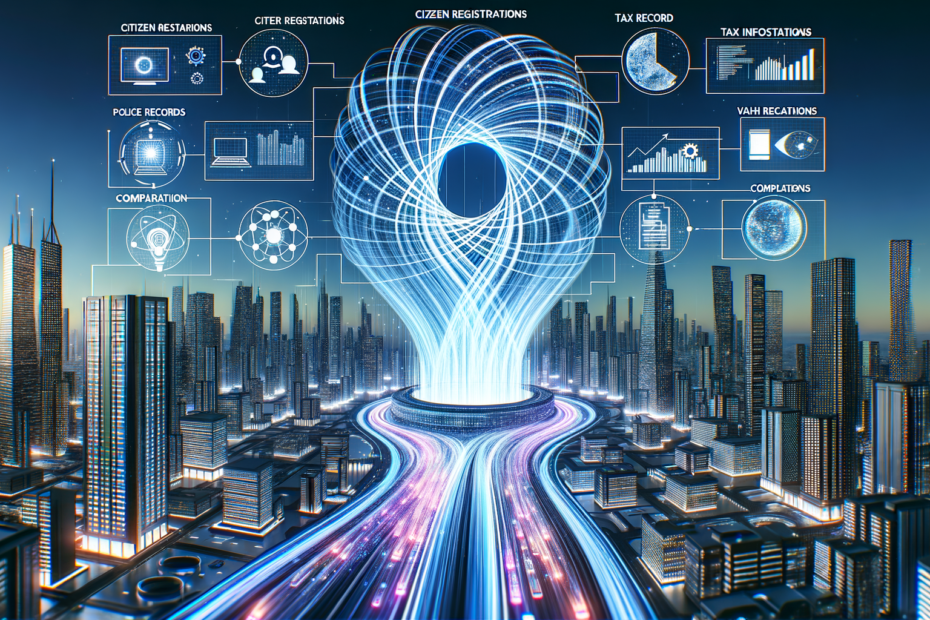The burgeoning landscape of smart cities presents a unique challenge: integrating data from a vast array of heterogeneous sources into a unified, high-performance Big Data Center. Citizen registration databases, police and crime records, tax information, vehicle registration systems – these are just a few examples of the diverse data streams a smart city Big Data Center needs to ingest and analyze. This blog post dives deep into various data integration techniques, meticulously comparing and contrasting their advantages and disadvantages for this specific context.
Data Source Heterogeneity: A Thorny Issue
The very essence of a smart city environment is its reliance on diverse data sources. These sources often possess distinct formats, structures, and schema definitions, creating a significant challenge for seamless integration. Inconsistencies and missing values further exacerbate the problem, potentially leading to biased or inaccurate analytics downstream. Addressing data quality issues upfront becomes paramount to ensure the integrity and reliability of insights derived from this complex data ecosystem.
Data Integration Techniques: A Comparative Analysis
Several data integration techniques have emerged to tackle the challenge of unifying disparate data sources. We’ll delve into the three most prominent:
- ETL (Extract, Transform, Load): The traditional ETL approach prioritizes data quality and control. Data is first extracted from source systems, then meticulously transformed to a pre-defined schema within a staging area. Finally, the transformed data is loaded into the target system, typically a Data Warehouse.Pros: * Centralized control over data quality. * Transformation logic ensures consistency and compliance.
- Cons:
- Latency introduced by upfront transformation steps.
- Risk of data loss or corruption during transformation.
- Cons:
- ELT (Extract, Load, Transform): This approach prioritizes speed and scalability. Data is extracted from source systems and loaded “raw” into a Data Lake, a large repository for unprocessed data. Transformation occurs later, on-demand, based on specific analytics needs.Pros: * Faster data ingestion due to minimal upfront processing. * Flexibility for diverse queries without schema restrictions. * Scalability for handling large and ever-growing datasets.
- Cons:
- Increased storage requirements for raw data.
- Requires robust data quality checks after loading.
- Cons:
- Reverse ETL: This technique flips the script, enriching and transforming data within the target system (Data Warehouse or Data Lake) before pushing it back to operational systems.Pros: * Ability to provide real-time insights to operational systems. * Enables targeted alerts and actions based on integrated data.
- Cons:
- Potential challenges with data consistency and version control.
- Security considerations when pushing data back to operational systems.
- Cons:
CDC (Change Data Capture): A Real-Time Approach
For real-time analytics, Change Data Capture (CDC) offers a compelling solution. CDC focuses on capturing only the changes made to source data, reducing network traffic and improving data processing velocity. However, implementing CDC can be complex, depending on the capabilities of the source systems.
Data Management Considerations: The Nuts and Bolts
- Schema Mapping: Defining mappings between source data schema and the target system schema is crucial. Tools can automate or semi-automate this process, but manual intervention might be necessary for complex data structures.
- Data Cleansing and Standardization: Data quality is paramount. Techniques for handling missing values, outliers, and inconsistencies are essential. Exploring machine learning for automated data cleansing holds promise.
- Data Quality Monitoring: Continuous monitoring ensures ongoing data integrity. Metrics like completeness, accuracy, consistency, and timeliness should be regularly evaluated.
Choosing the Right Technique: A Data-Driven Decision
The optimal data integration approach depends on various factors:
- Data Volume, Velocity, and Variety (3Vs): Consider the amount, speed of arrival, and diversity of data streams.
- Latency Requirements: How quickly does data need to be processed and analyzed?
- Desired Analytics: What insights are you trying to extract from the integrated data?
A hybrid approach, combining techniques like ETL and CDC, might be suitable for certain scenarios.
Security and Privacy: Navigating Sensitive Data
Integrating sensitive data like citizen information necessitates robust security and privacy controls. Anonymization techniques and access control measures are essential to mitigate risks.
Conclusion: A Unified Future for Smart City Data
Selecting the appropriate data integration technique unlocks the full potential of a smart city Big Data Center. By carefully considering the specific data characteristics and desired analytics, data engineers can pave the way for accurate, real-time insights that drive smarter city planning and improved quality of life for citizens. The future holds promise for further advancements in data integration technology, enabling even more efficient and sophisticated smart city data management.
